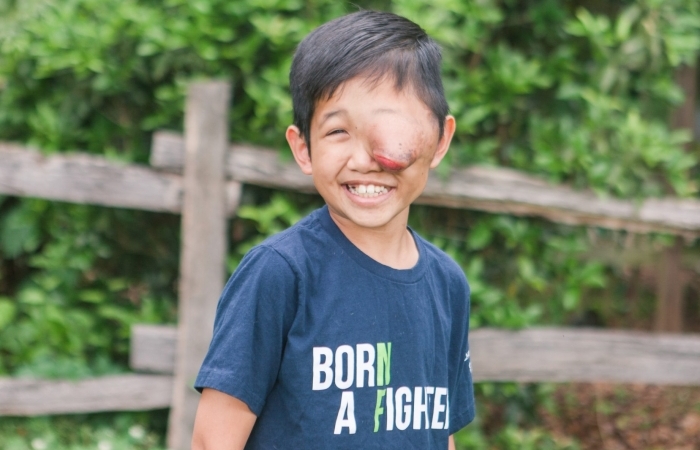Context
Neurofibromatosis, also known as NF, is a genetic disorder which affects 1 in every 3,000 people of every population (meaning there are over 2.5 million people worldwide who live with NF).
At this time, there is no approved cure for NF, but a number of promising NF clinical trials are under way. As researchers continually learn more about the underlying causes of NF and what makes tumors grow, we are closer to the development of effective treatments for NF.
There are three types of NF: NF1, NF2, and schwannomatosis.
Neurofibromatosis type 1 (NF1), formerly known as von Recklinghausen NF or Peripheral NF, is the most common of the three types of neurofibromatosis, and is also one of the most common inherited neurological disorders, affecting about 1 in 3,000 people throughout the world. The hallmark tumors of the disorder are plexiform neurofibromas (non-cancerous tumors growing on nerves).
- 50% – 80% of people with NF1 have moderate to severe behavioral and/ or learning challenges. -Softening and curving of bones, and curvature of the spine (scoliosis) may occur in some patients with NF1. Occasionally, tumors may develop in the brain, on cranial nerves, or on the spinal cord. While NF tumors are generally not cancerous, they often cause health problems by pressing on nearby body tissue. In 8-13% of NF1 patients, the non cancerous plexiform neurofibromas turn into highly malignant sarcomas (called malignant peripheral nerve sheath tumors, or MPNST). There is no way to predict who will have a mild case and who will develop more serious symptoms.
Neurofibromatosis type 2 (NF2) is less common than NF1, affecting about 1 in 25,000 people worldwide. The hallmark tumors of NF2 are vestibular schwannomas (formerly called acoustic neuromas), on the nerve that carries sound and balance information from the inner ear to the brain (the eighth cranial nerve). These tumors affect both ears, often leading to partial or complete hearing loss. People with NF2 may also develop other types of benign brain or spinal tumors. The disorder can also cause the development of cataracts or other eye findings, potentially compromising vision. Most people develop symptoms in the late teen and early adult years, although about 10% of people develop symptoms during late childhood.
Schwannomatosis is a rare form of neurofibromatosis that has only recently been identified. The genetic disorder affects less than 1 in 40,000 people, and causes the development of benign tumors — called schwannomas — usually on spinal and peripheral nerves. These tumors develop when Schwann cells, which form the insulating cover around nerve fibers, grow abnormally. Tumor development appears to be primarily related to a change, or mutation, in certain genes that help regulate cell growth in the nervous system. These mutations prevent the genes from making the normal proteins that control cell proliferation, allowing cells to multiply excessively and form tumors. These tumors may cause excruciating pain that may be hard to manage. Schwannomatosis is usually diagnosed in adulthood.
Goals
Catalyze new discoveries by financing the most promising basic and clinical research projects.
Activities and Key Performance Indicators to be Reached (KPIs)
- Increase the number of clinical trials for all forms of NF
- Increase the number of specialized NF clinics that can provide the best care to patients
- Expand the NF research community with new talented researchers, including from outside NF in related disciplines
- Create a community of Open Science where results and data are freely shared and exchanged
- Finance the best and brightest NF research who will help shed light on the disease, in order to find a cure
Myriad Canada is working with the Children’s Tumor Foundation (CTF) on this project, a 501(c)(3) founded in 1978. Today, CTF is a highly recognized medical research foundation. The vision of the Children’s Tumor Foundation is to End NF and their mission is to drive research, expand knowledge, and advance care for the NF community.While there is no cure yet, the Children’s Tumor Foundation mission of driving research, expanding knowledge, and advancing care for the NF community fosters the vision of one day ending NF.
Read also the story of the Thoms family that contributed to this project.
 |
 |
Myriad Canada’s role is to carry out charitable projects across the globe in accordance with its charitable purposes. We control and monitor the use of funds and the progress of charitable activities to ensure that donations made to Myriad Canada have the greatest impact in accordance with donors’ expressed wishes. As a member of the Myriad Alliance with offices in Canada, the US, Europe, Asia and Australia, Myriad Canada has a vast international network and extensive practical expertise.
How to support this project?
By credit card: At the top right of this page, indicate the amount you wish to donate, and make the donation online by credit card. You will receive a receipt for tax purposes by e-mail just a few minutes after making the donation. It is simple and quick!
By cheque:
- Make your cheque out to Myriad Canada.
- IMPORTANT NOTE: We receive a lot of cheques! You must please indicate “Project G401 – Scientific Research on NF with CTF” in the memo line of your cheque to ensure that it is allocated correctly.
- Mail your cheque to: Myriad Canada, 1 Place Ville Marie, Suite 1670, Montreal, QC, H3B 2B6, Canada.
By Direct Deposit:
- For transfer instructions, please email or call Caroline Chaulet: caroline@myriadcanada.org or +1 438 300 8122.
For Donation of Securities:
- Please email or call Caroline Chaulet: caroline@myriadcanada.org or +1 438 300 8122.
For Monthly Donations:
- We use CanadaHelps. Please find the link here.
If you need any assistance, please do not hesitate to contact us.
All donations are eligible for a tax receipt in Canada.
The projects are managed with the greatest care and professionalism.

